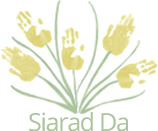RECEPTIVE AND EXPRESSIVE LANGUAGE DISORDERS
It is estimated that between three and five per cent of children have a receptive or expressive language disorder, or a mixture of both.
Receptive language disorder: the process of understanding what is being said to us (comprehending the input).
Expressive language disorder: refers to the words we use to communicate what we think, feel, need or want (formulating and executing the output).
Language disorders can occur separately, or an individual may have both kinds of disorders at the same time…a person can have more receptive language than expressive and vice versa, but both expressive and receptive language processes are essential for effective communication.
We take these skills for granted. Difficulties are not always easy to identify and are often called a ‘hidden disability’.
We know that in some parts of the UK, particularly in areas of poverty, over half of children start school with language and communication needs.
When language difficulties are not identified, there is frustration and anger which can lead to aggression, challenging behaviour, social exclusion and criminal activity.
These children may have immature language, a smaller vocabulary,  use shorter sentences or only able to understand simple sentences.
use shorter sentences or only able to understand simple sentences.
Many of these children will catch up with the rest of the class given the right support.


